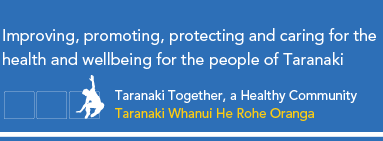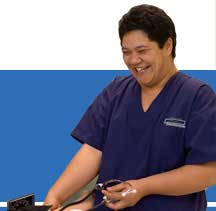Measles Case Prompts Health Alert
15 April 2010Taranaki DHB Medical Officer of Health, Dr Greg Simmons, is urging all Taranaki parents to watch out for the symptoms of measles following a confirmed case in a South Taranaki child. This case is the first reported in Taranaki since 2007.
The early symptoms of measles include fever, cough, runny nose, sore red eyes. After 3-5 days a rash usually appears on the face and moves down onto the chest.
Dr Simmons said: ”Any parents who think that their child might have measles should keep them at home and phone your family doctor or Healthline 0800 611 116 for advice.”
“Measles is a serious and highly infectious viral disease that can make people very sick and it can lead to serious complications including ear infections, pneumonia and inflammation of the brain,” he said.
Immunisation is the best protection against measles. The measles, mumps and rubella (MMR) vaccine is available free at 15 months and four years of age, and to anyone under the age of 40. Two doses of MMR provide 90 to 95 percent protection against measles.
“There is a more than 90 percent chance that an unimmunised person will catch measles if they come into contact with someone who is infected. If children are behind with any of their immunisations, it’s never too late to catch up. Contact your family doctor now.
About 86 percent of Taranaki two-year-olds have had all the recommended immunisations for their age, including the first dose of MMR, but we need to get to 95 percent to prevent measles outbreaks.”
There is no apparent link between the Taranaki case and those recently occurring in Northland and Wellington.
For more information please go to www.health.govt.nz/immunisation, the Immunisation Advisory Centre website www.immune.org.nz or phone the IMAC toll-free line 0800 IMMUNE (0800 466 863). Questions and answers included below.
For more information please call
Sue Carrington
Taranaki DHB Media Adviser
Ph 021 367 789
Questions and Answers
What is Measles?
Measles is sometimes known as English Measles. It leads to ear infections, pneumonia and diarrhea in about one in 10 cases. About one in 1000 cases gets encephalitis (inflammation of the brain), of whom 15 in 100 people die and 25–35 people in 100 are left with permanent brain damage.
Why is it important to stop the spread of measles?
Measles is a preventable disease – but only if immunisation rates are high and we respond to outbreaks quickly. New Zealand and other countries in the Western Pacific have all agreed to eradicate measles by 2012. The goal is for no New Zealanders to get measles, and to stop its spread to other countries.
How can you catch measles?
Measles is highly infectious and is spread by sneezing, coughing or from direct contact with nasal or throat secretions. It is estimated that up to 13 people can become infected from coming into contact with just one person with measles.
What are the symptoms?
Measles usually causes a rash, high fever, runny nose, cough and sore watery eyes. A person is infectious from one day before the start of symptoms to four days after the appearance of the rash. A fever might not appear until 10-12 days after a person is infected and the characteristic measles rash can take several more days to develop.
How is measles diagnosed and treated?
If a doctor suspects measles they can confirm it through a blood test or throat swab. Usually the only treatment is to relieve symptoms. It is important that anyone with measles stays at home until they are no longer infectious – at least four days after the rash appears.
Who should receive the measles, mumps and rubella (MMR) vaccine?
The measles, mumps and rubella (MMR) vaccine is given free routinely at 15 months and four years of age as part of the National Immunisation Schedule. As a result of the current measles outbreak, doctors are being asked to recall all children aged between 12 months and 12 years who have not received one dose of MMR. This means that some children aged between 12 months and 15 months may receive their first dose of the vaccine early, in order to give them immediate protection from measles. As well, all adults born after 1969 are eligible for a free MMR booster.
How effective is the MMR vaccine?
It is estimated that 90 to 95 per cent of people are protected after both doses. Though some people will still get the disease even if they have been immunised, it is usually not as severe as it is in people who have not been vaccinated. The measles vaccine was not introduced in New Zealand until 1969. Most adult New Zealanders are thought to be immune to measles through previous exposure to the disease.
Can I get a measles-only vaccine?
No. Not in New Zealand. The two measles-only vaccines licensed for use in New Zealand are no longer available from the manufacturer.
Last updated: Tuesday, December 13, 2011



